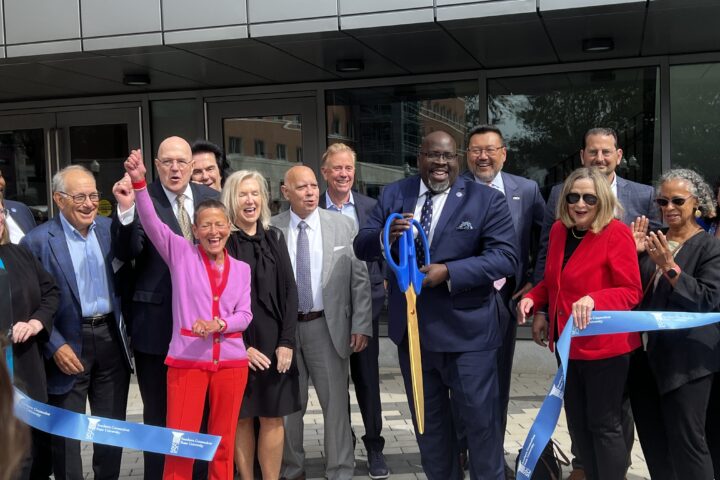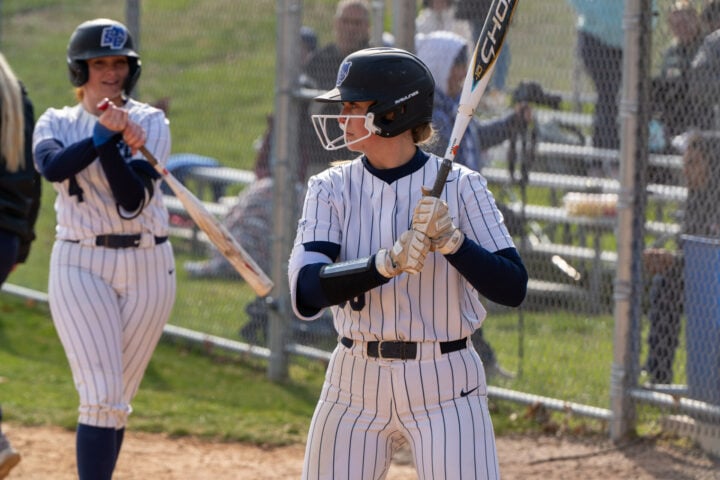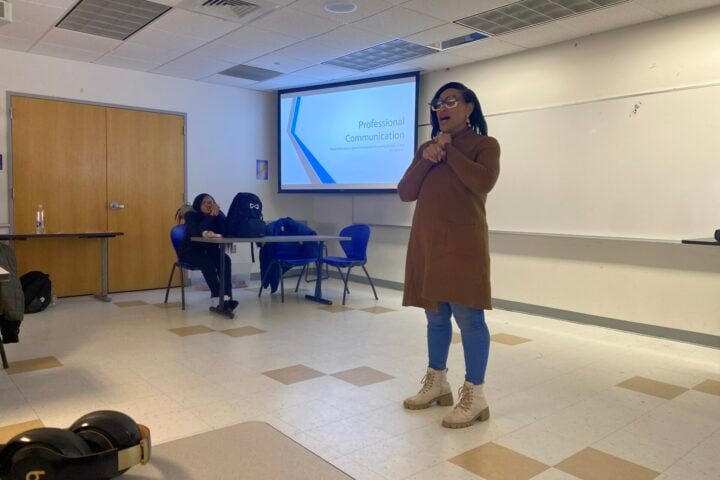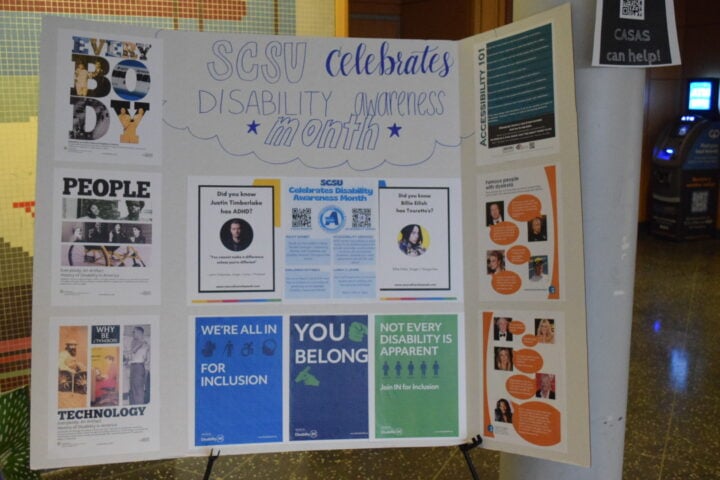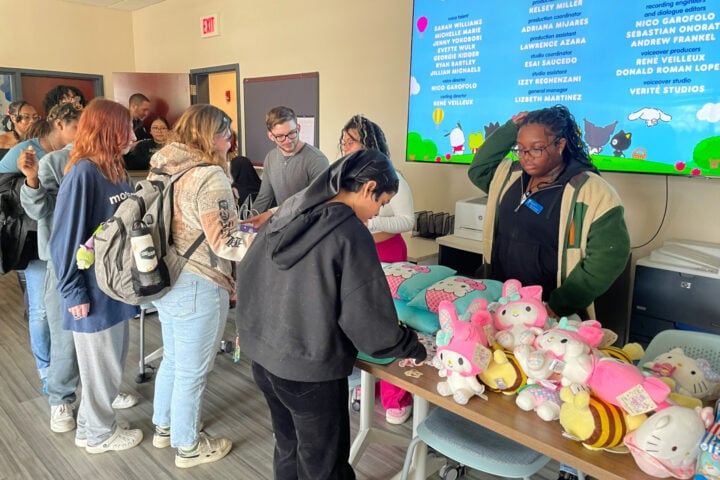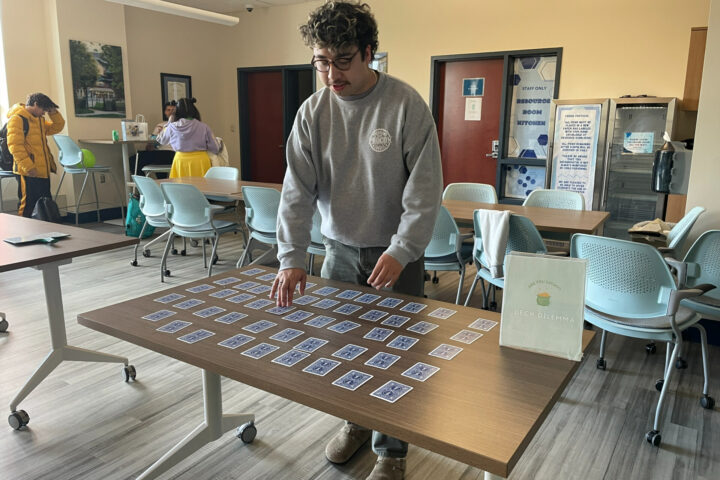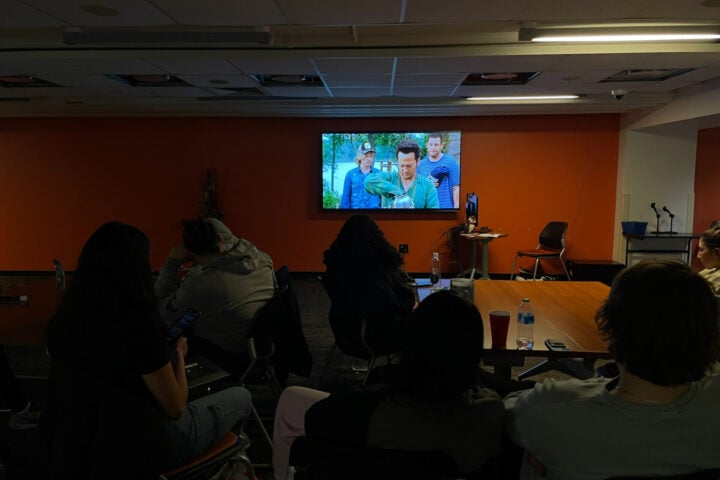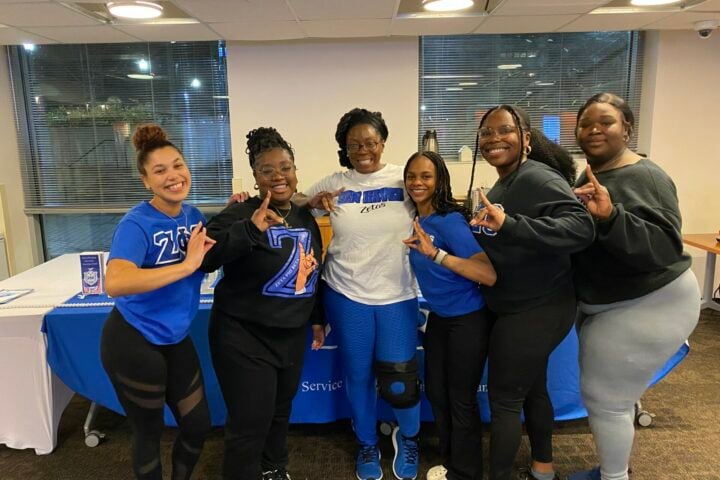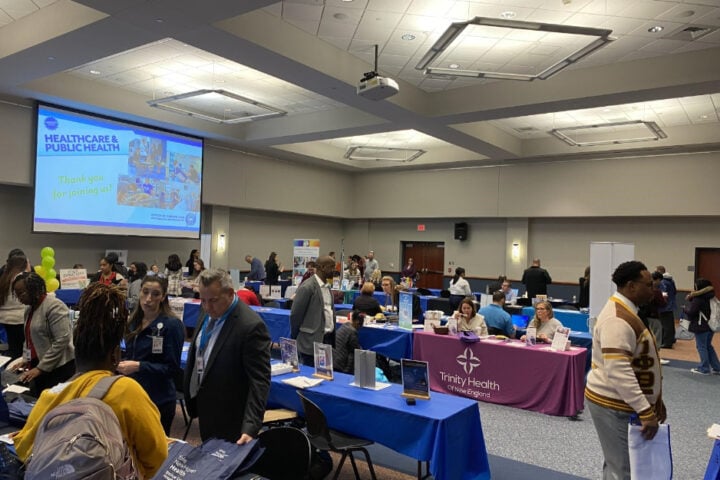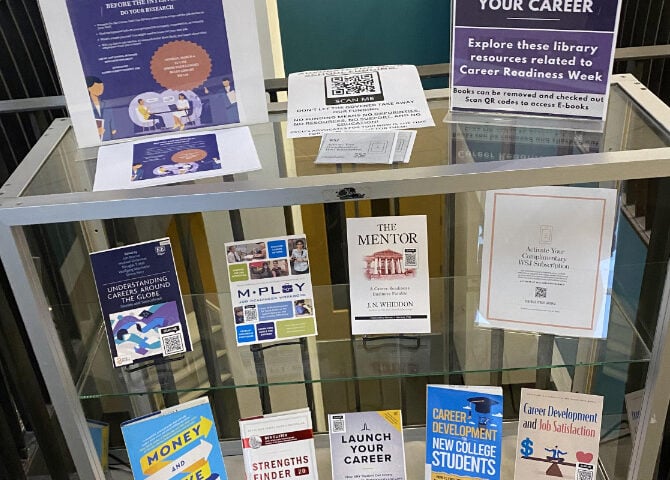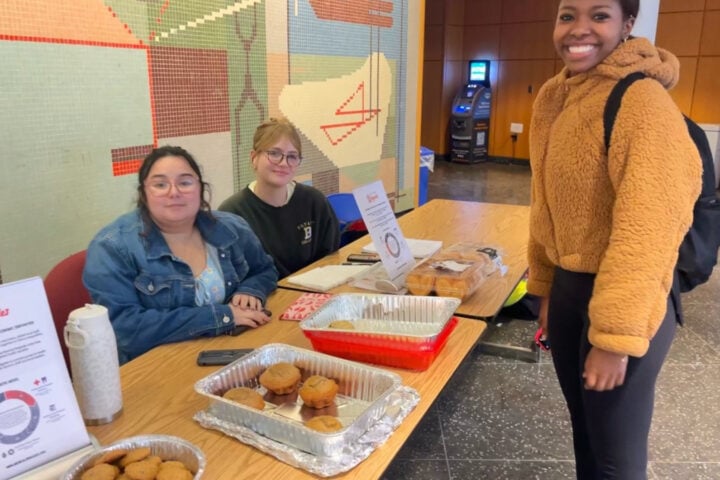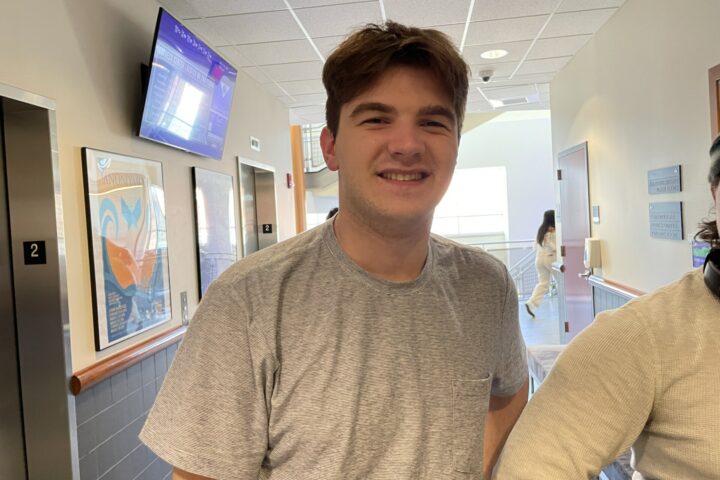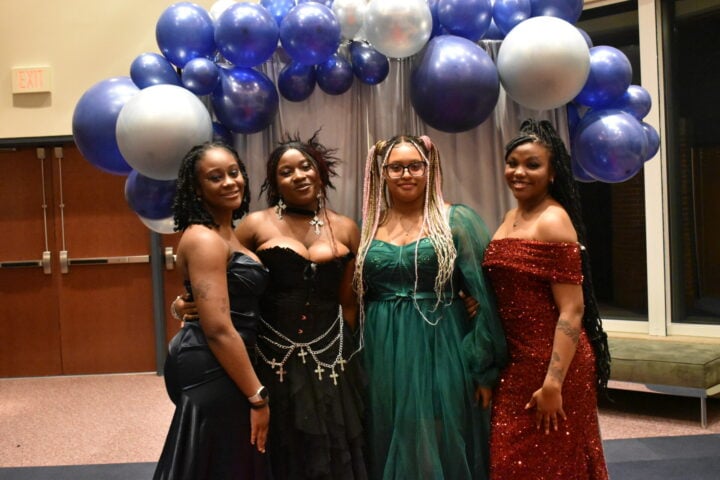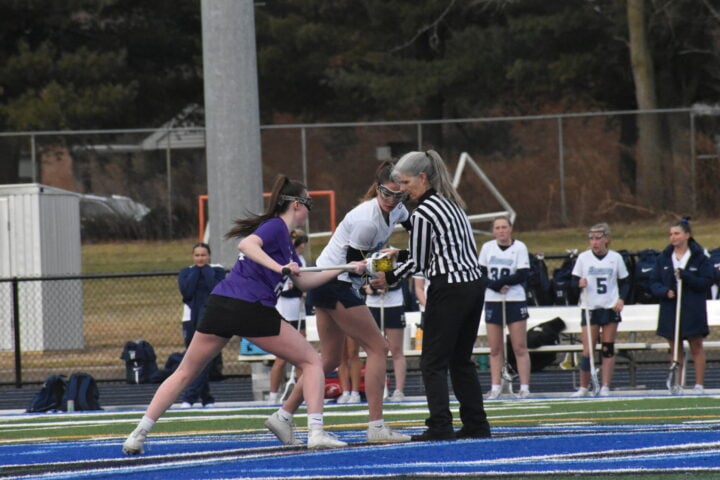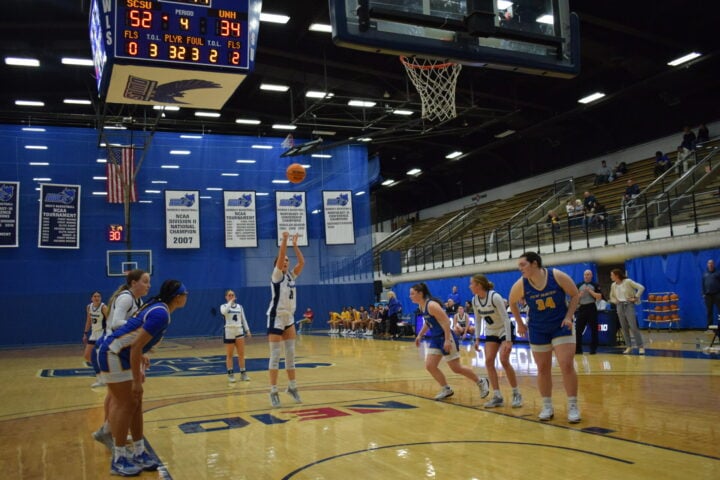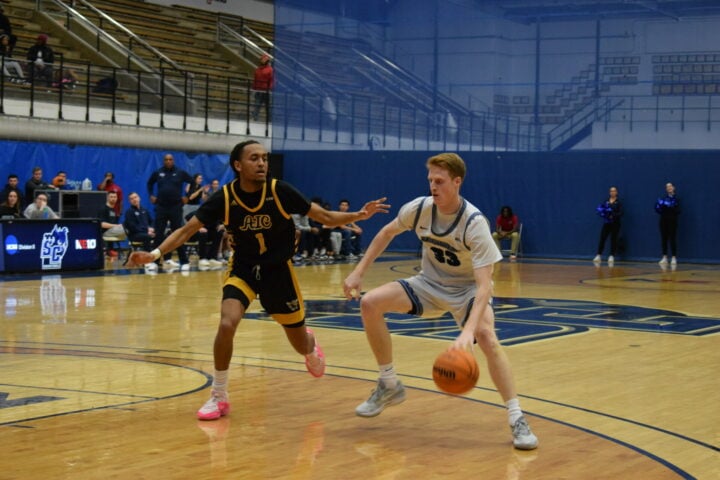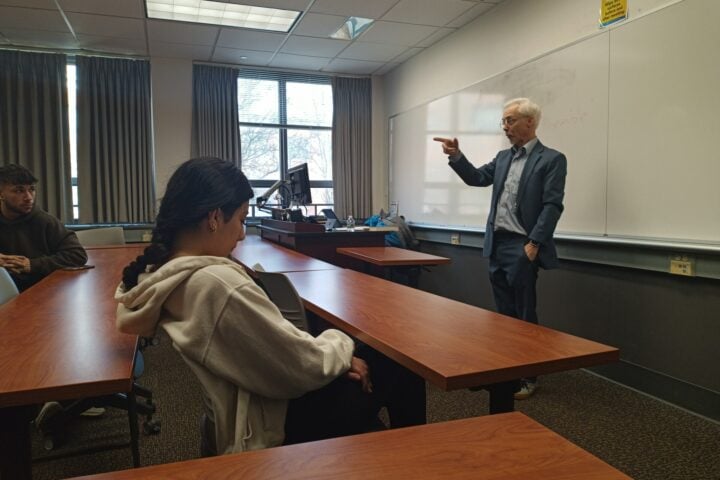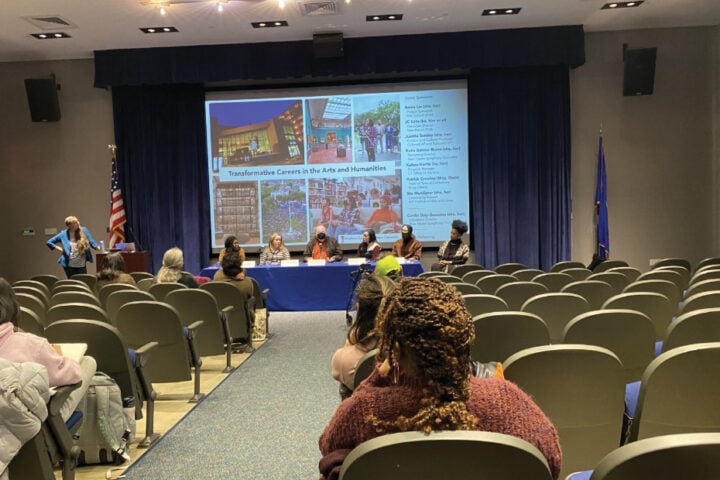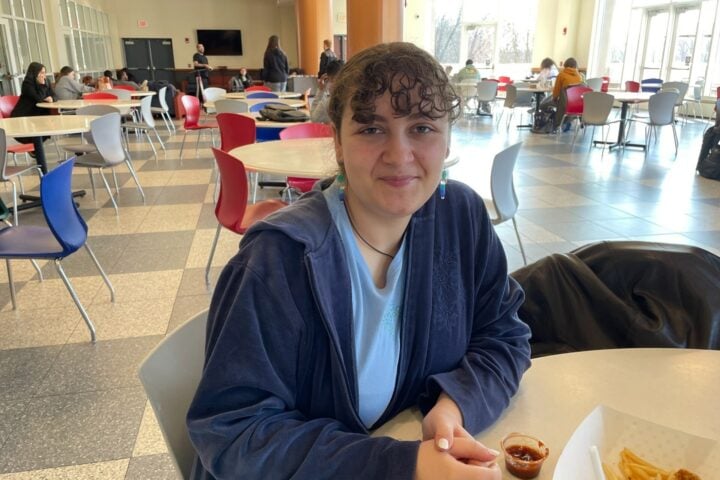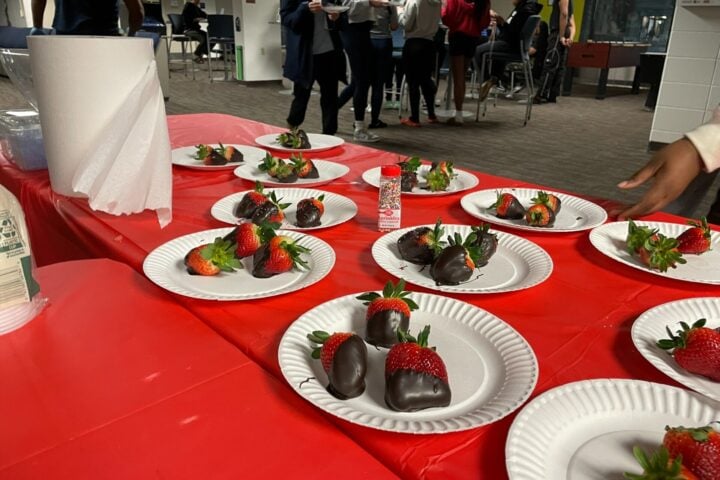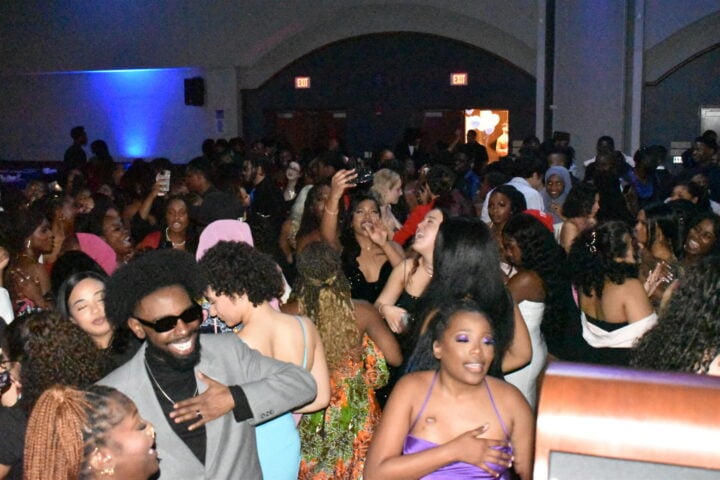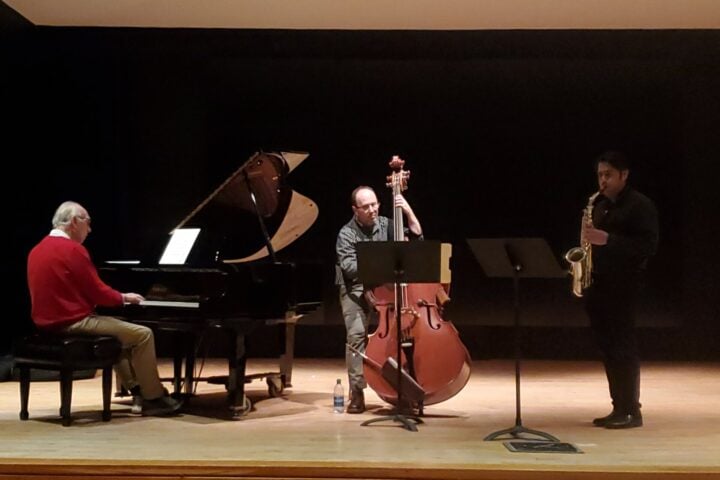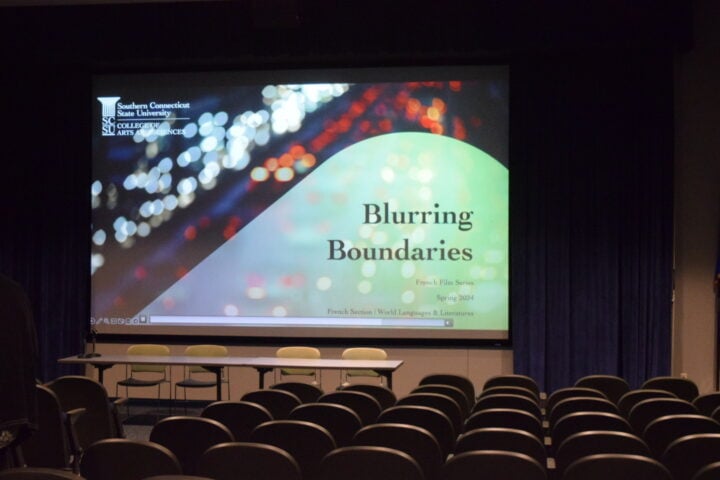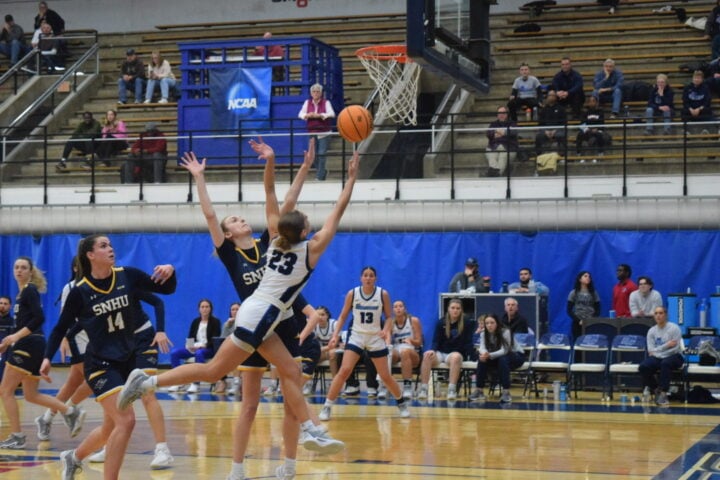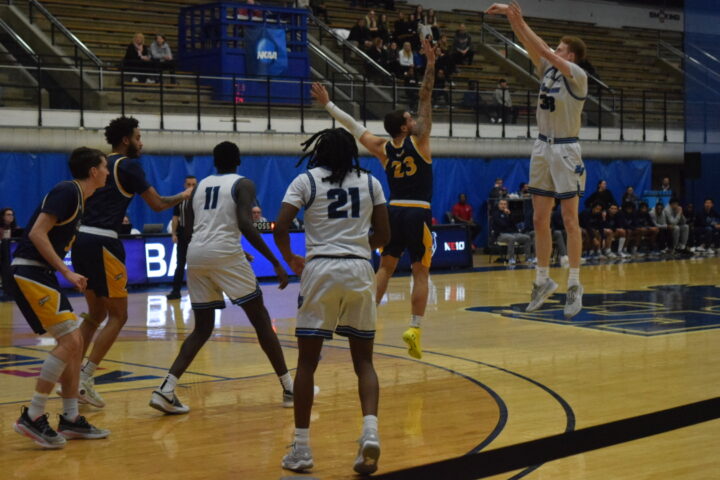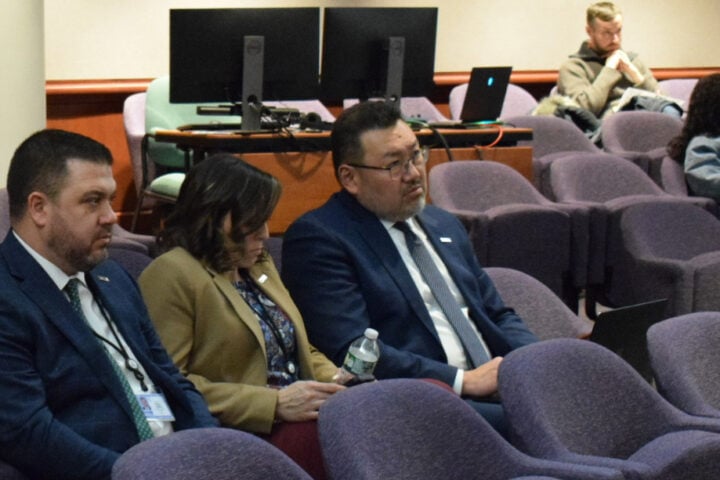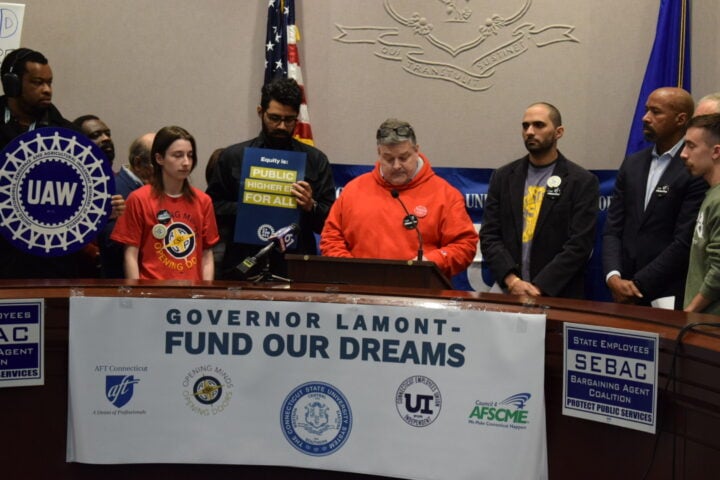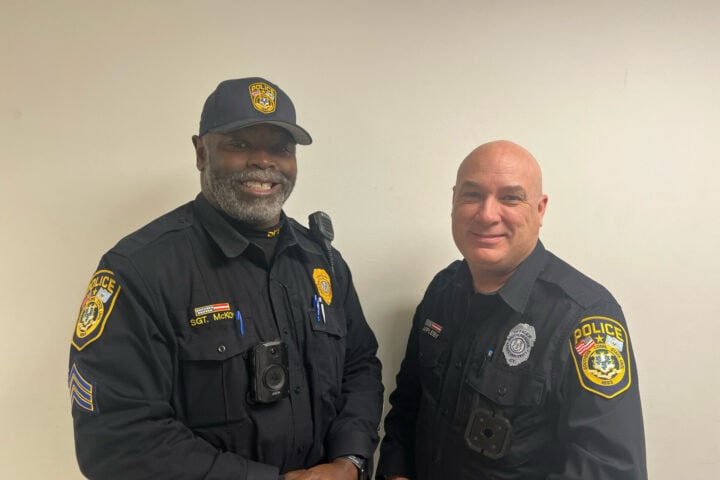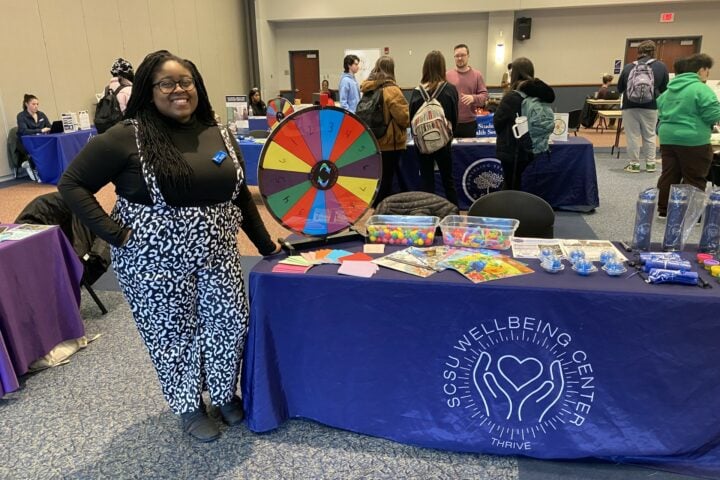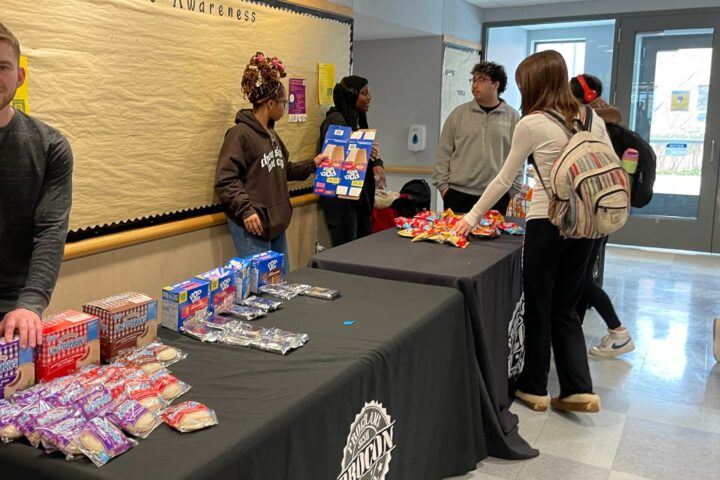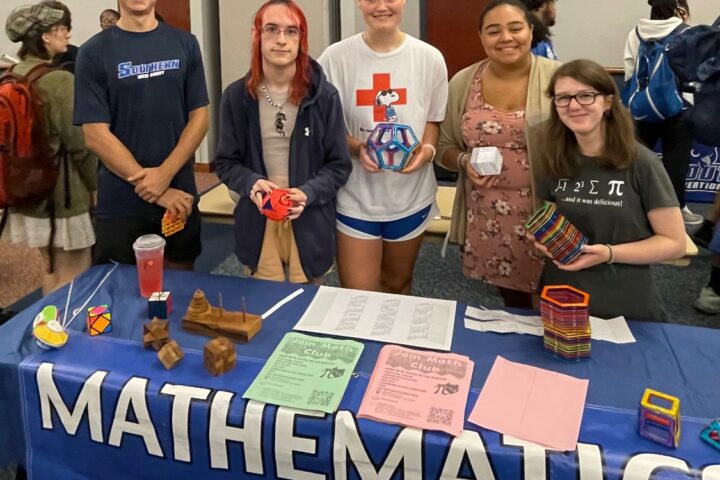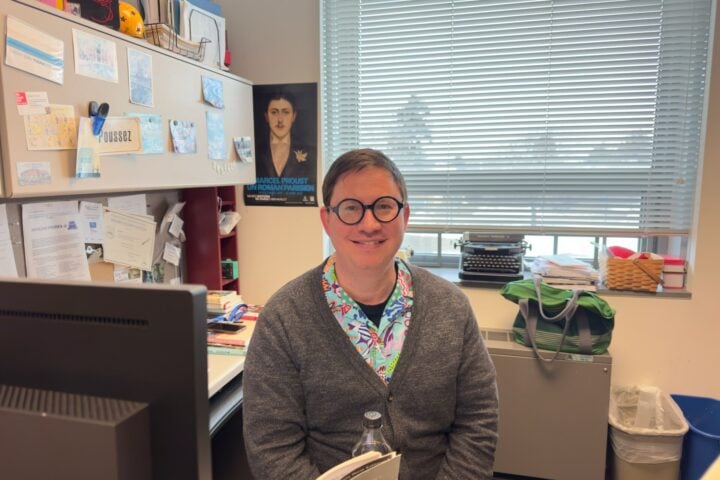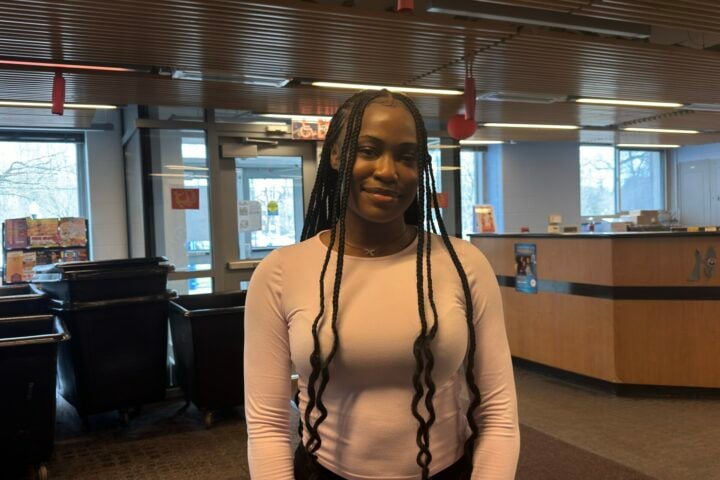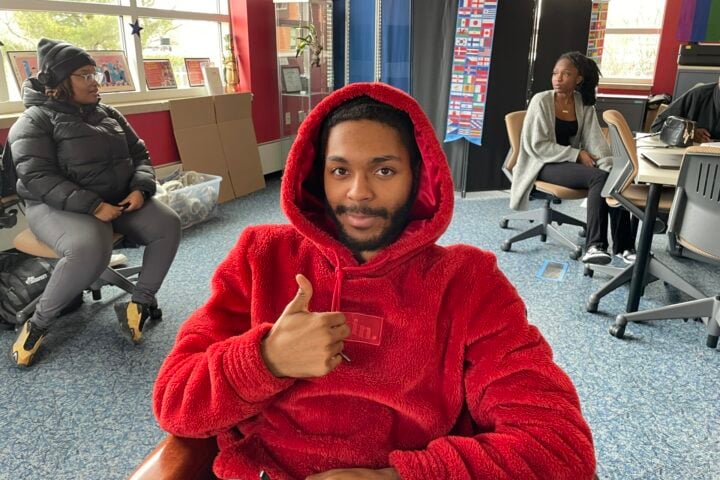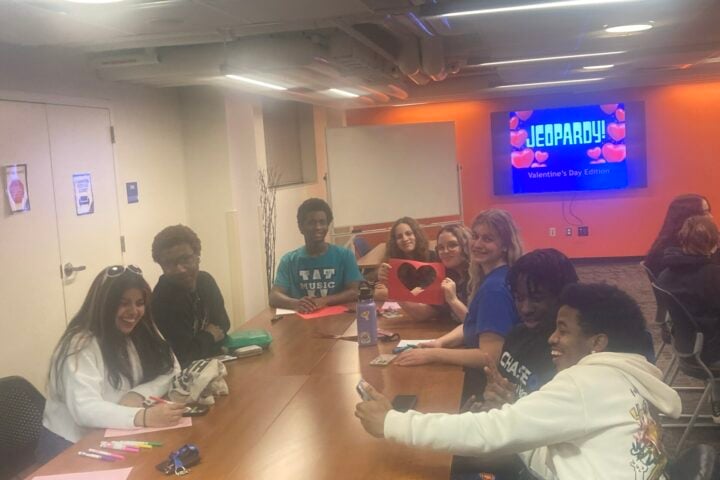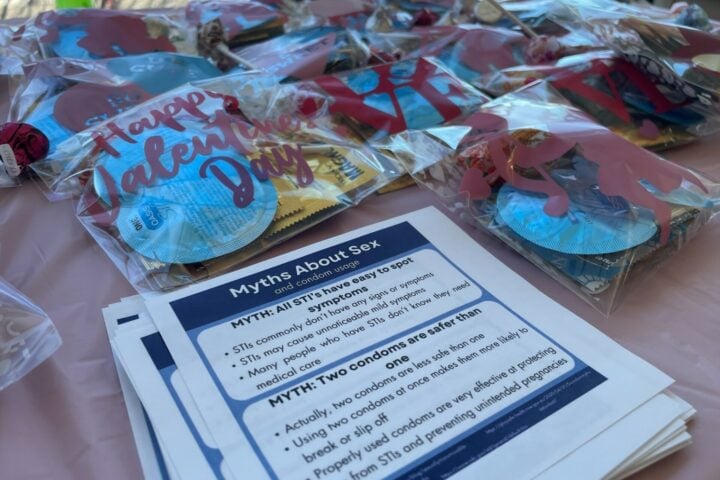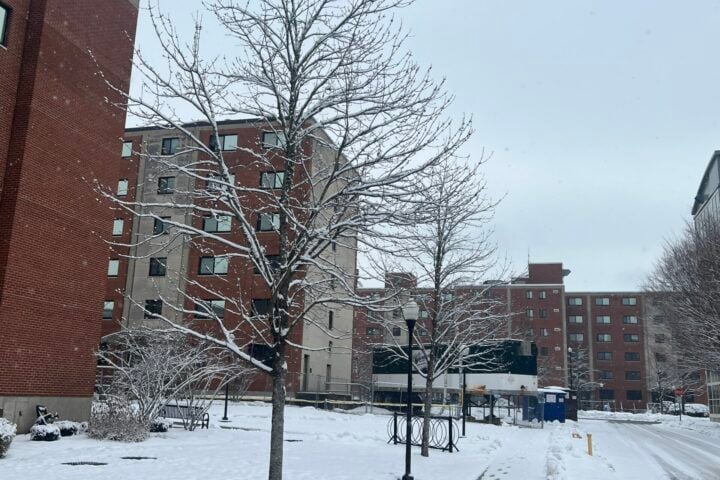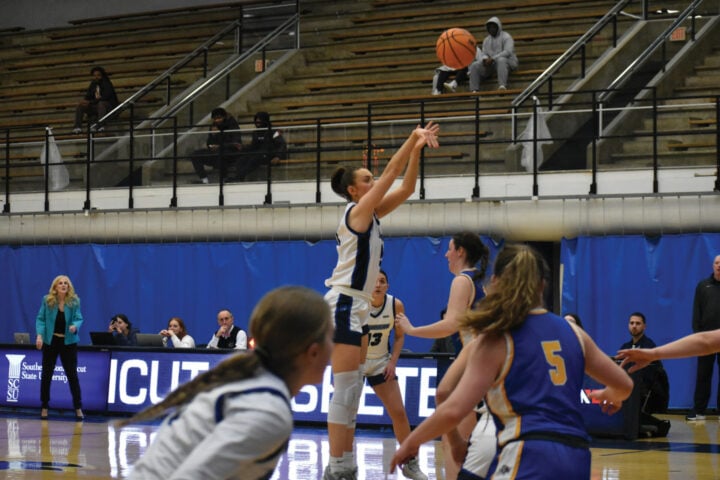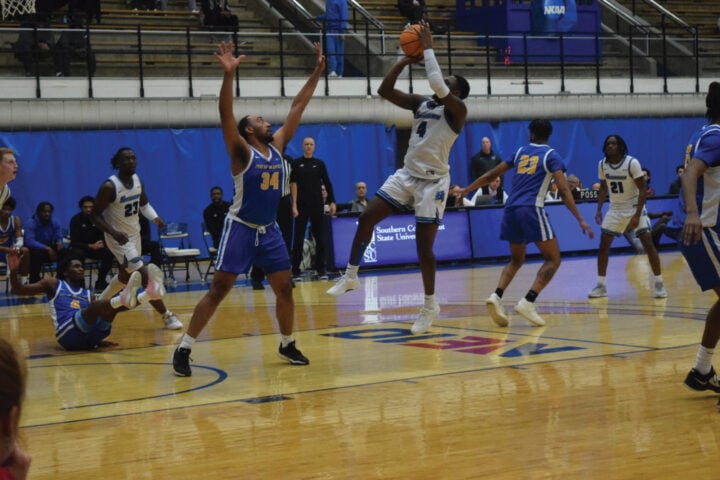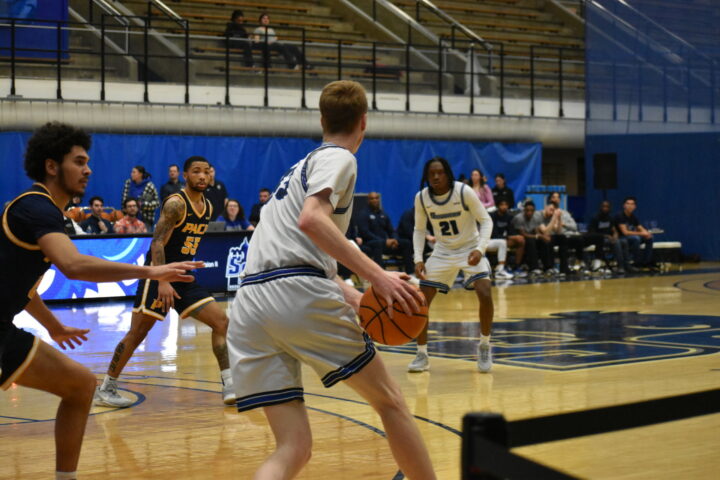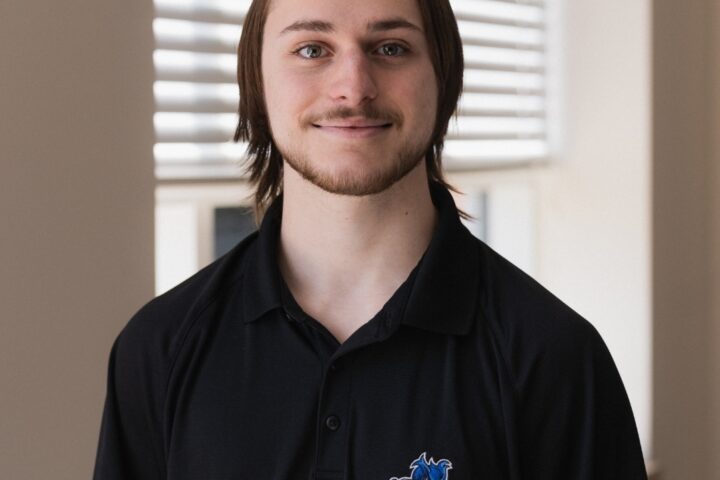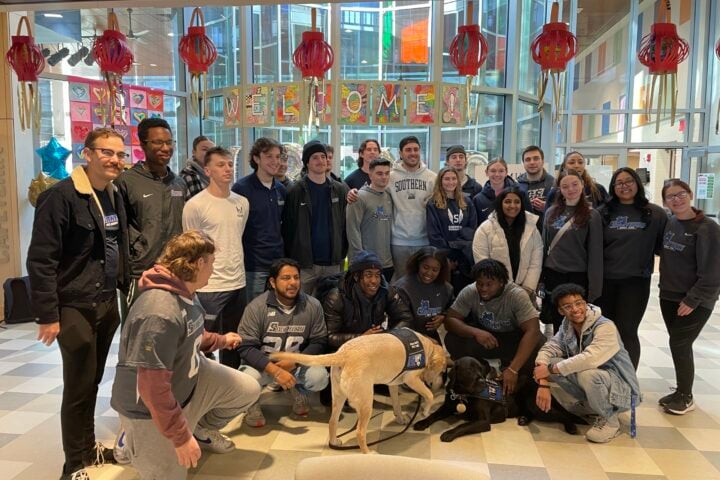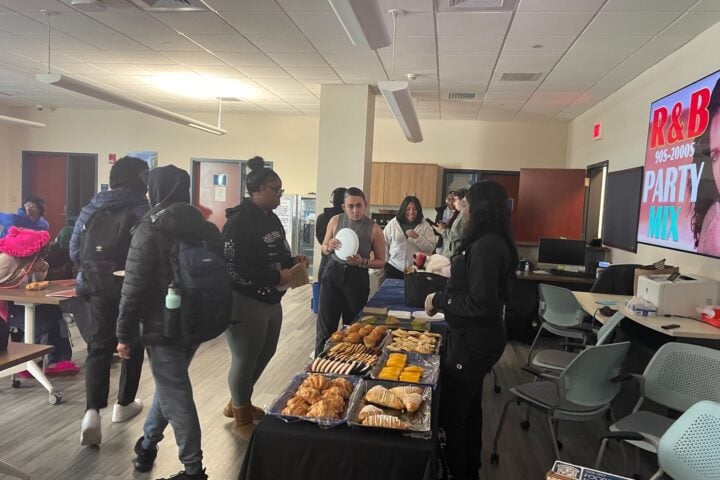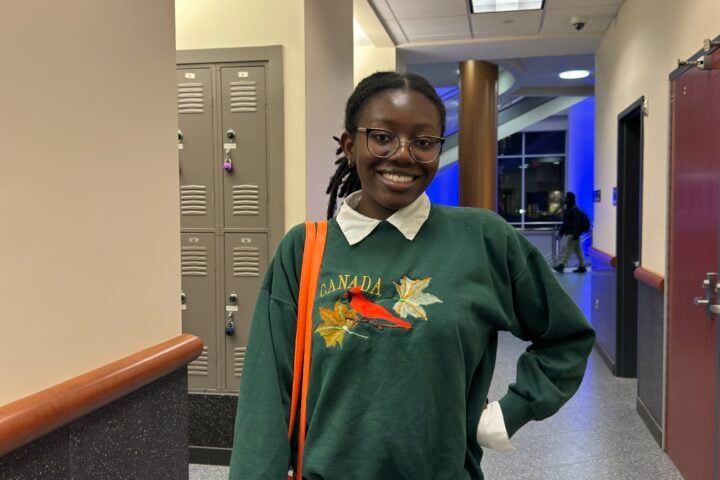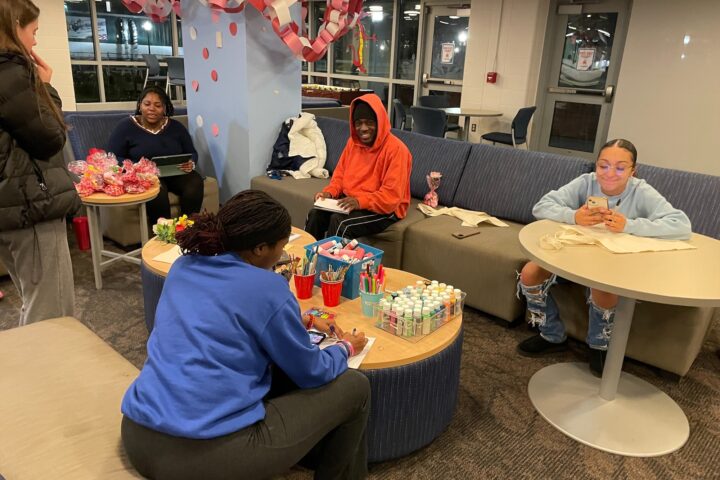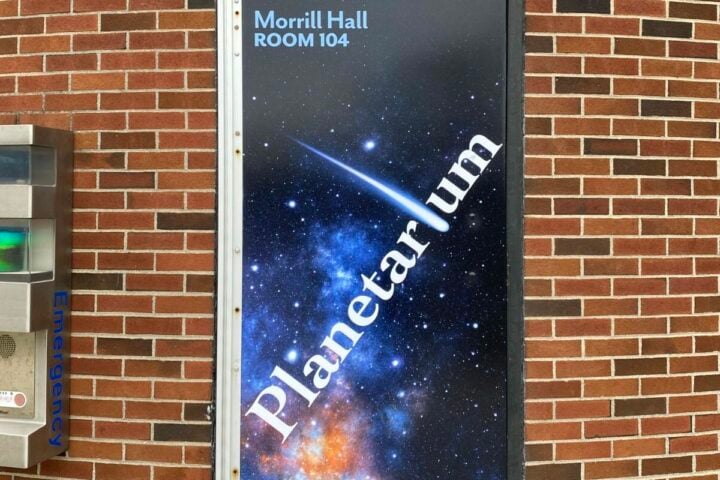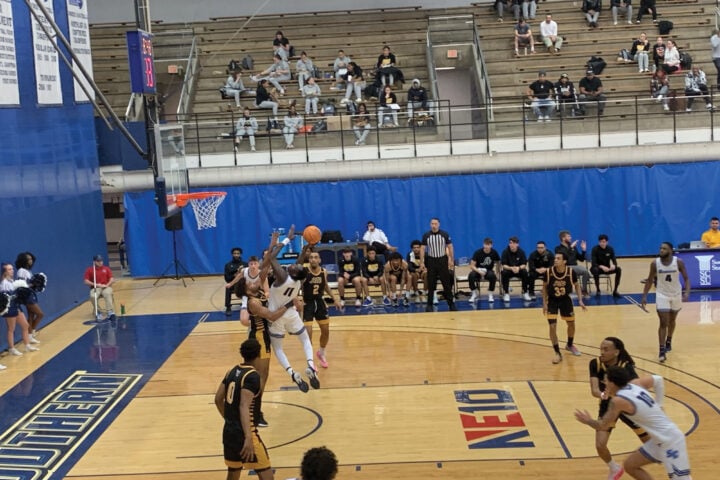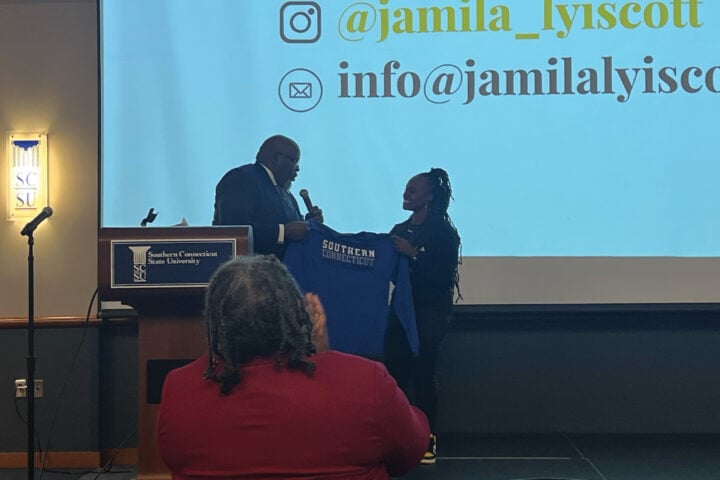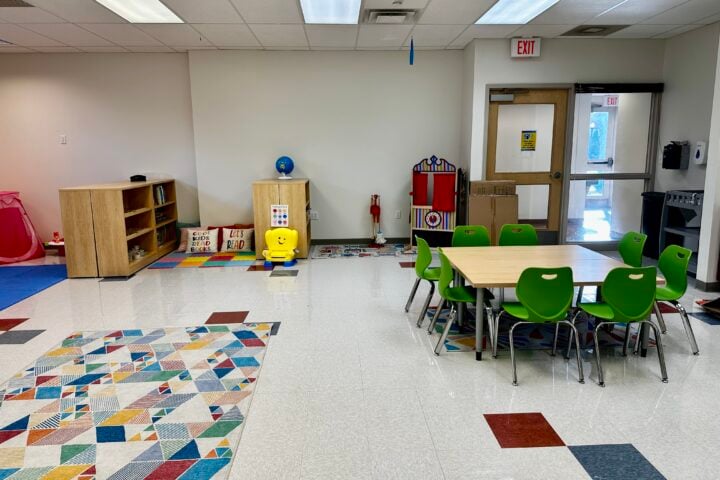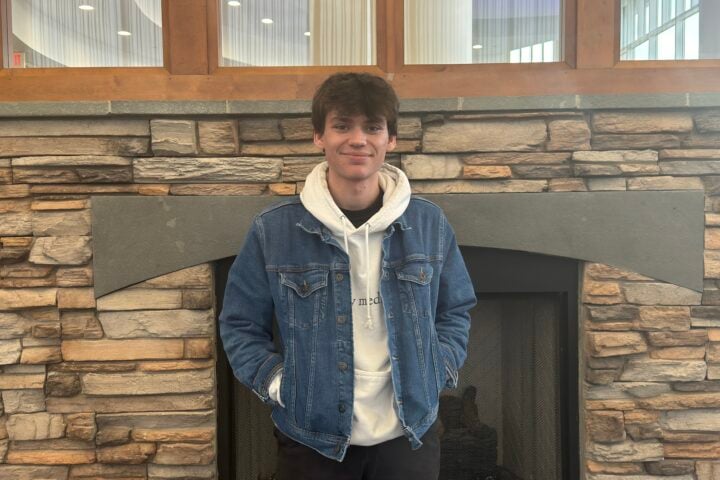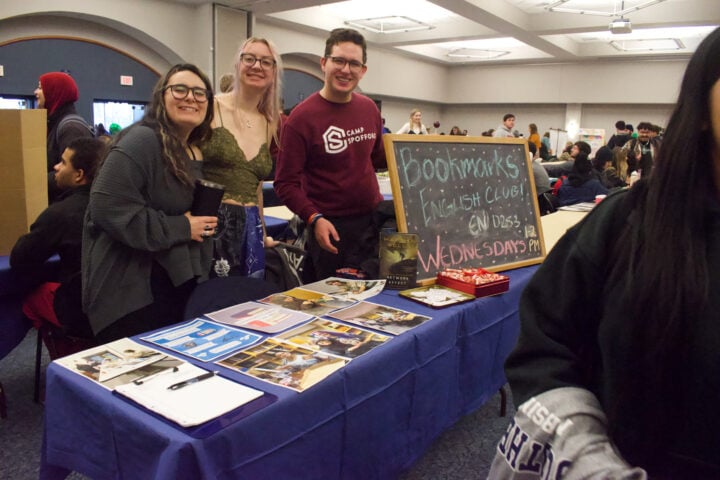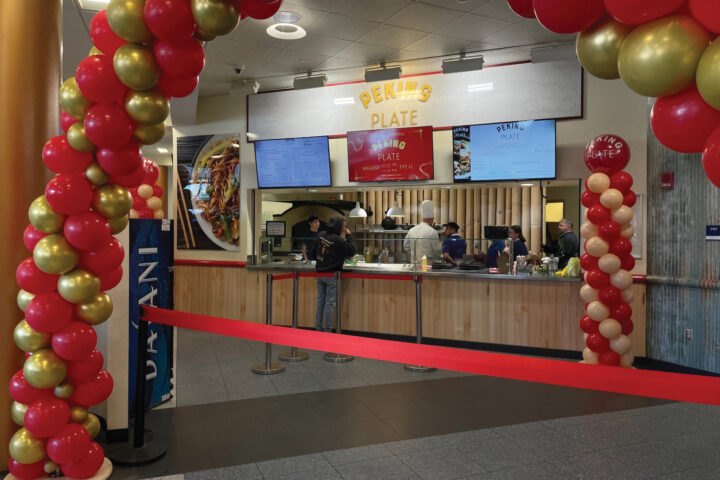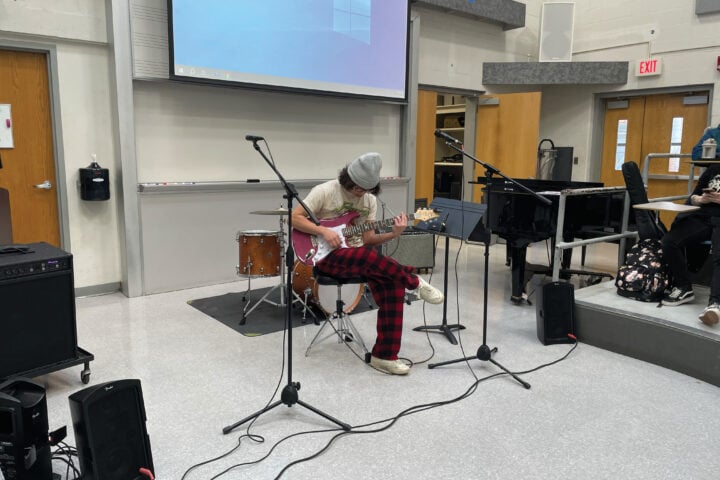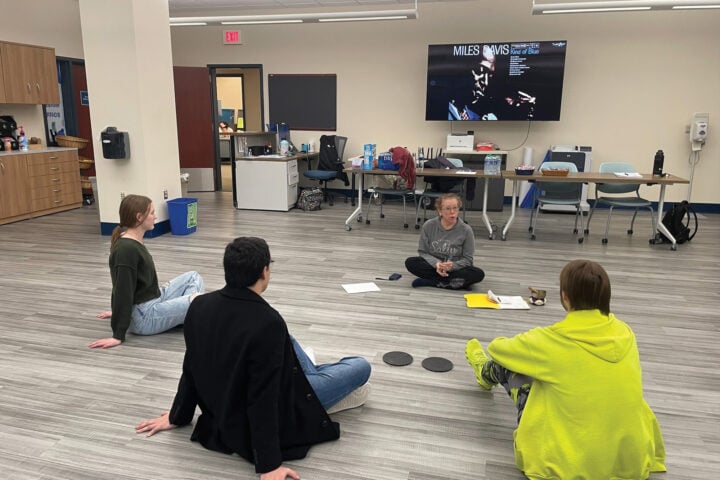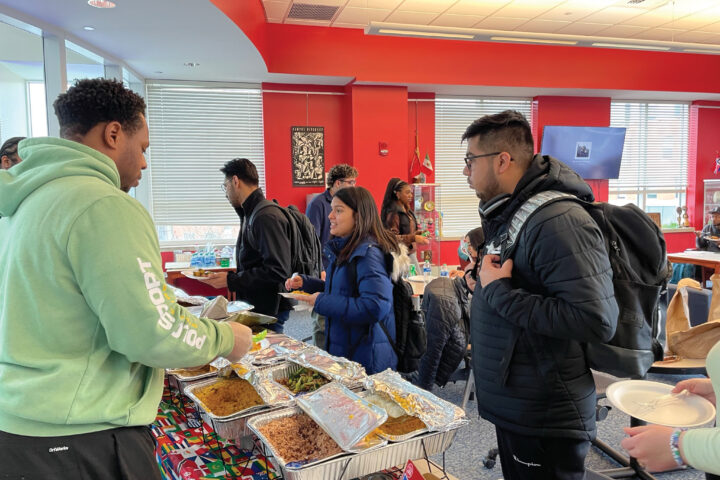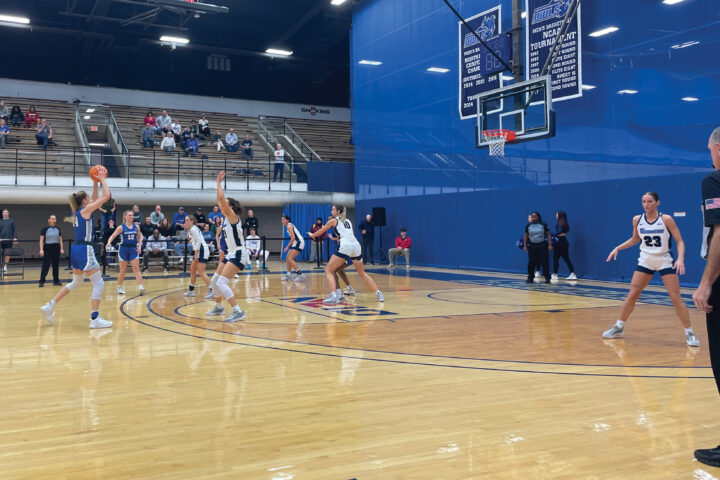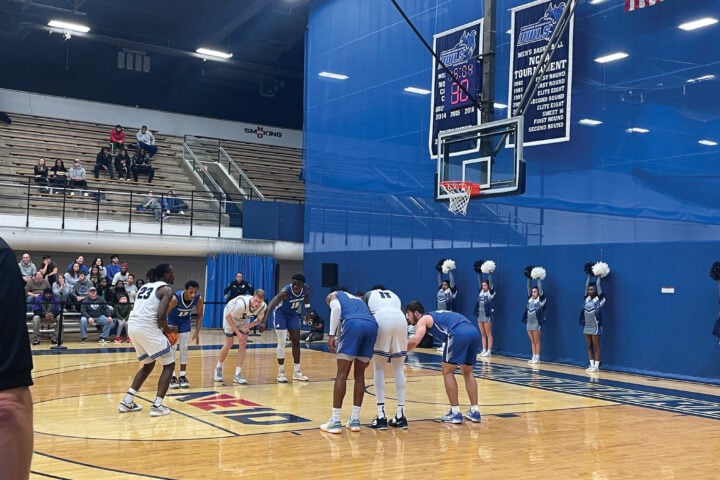Students from the Journalism News Writing course under the direction of Prof. Cindy Simoneau surveyed students on campus services. Project editors: Kevin Crompton, Sidney Jones, August Pelliccio and Michael Riccio. Student reporters: Matthew Araujo, Jailene Cuevas, Dave Fowlin, Jonathan Gonzalez, Gerald Isaac, Shawn McFarlane and Jenna Stepleman.
Late night dining on campus, GPS located shuttle bus services, weekend campus healthcare, weight training at school; students expressed the principle ways student services could be improved.
Over the course of the semester, the Journalism Department’s news writing class surveyed over 450 students about campus access to food, health services, shuttle buses and the gym. The four amenities students were interviewed about were what the class deemed to have the largest effect on students’ campus experience, and the greatest margin for improvement.
For each of the four categories, students suggested both minor amendments, and recommendations for large-scale improvements. The highest majority of students routing for change was the necessity for dining services late at night.
Food Services
Southern offers a total of six different on-campus locations for students to access food. However, students who wish to access that food late at night are out of luck.
“Sometimes I’m hungry late at night and I don’t feel like driving over to McDonald’s to get some food,” said sophomore and psychology major Dejah Davis.
Of the surveyed students, 95 percent of residents surveyed said they would like to see Southern add a 24-hour food service.
These students said they would use the service during the current hours that food services are closed on campus. Connecticut Hall offers the latest opportunity to dine on campus, closing at 9 p.m. The last chance to purchase food anywhere on campus is at 10 p.m. in the Owl Perch.
“It really just boils down to cost,” said Brad Crerar director of Adanti Student Center. “At one point years ago, Connecticut Hall was open until midnight.”
Aside from Connecticut Hall and the Adanti Student Center food court, Southern offers four other locations in which food is accessible. The Bagel Wagon located in Engelman Hall, the Owl Perch located in Buley Library, the Davis Hall Kiosk and Roberta’s located in North Campus.
Crerar said keeping Connecticut Hall open any later simply is not cost effective.
“What we’ve tried in the past hasn’t worked,” said Crerar who is in charge of overseeing the day to day operation of Connecticut Hall. “The Perch was actually open late for quite a while and we kind of cut that back as well because the usage wasn’t there. The students say they want it but then they don’t use it because it’s not what they want. It’s easier for them to pick up the phone and call Uber Eats or whoever it is and have the food delivered if they want it.”
Senior and communication major, Scott LaFontaine said hewould visit a 24-hour food service during night hours every week.
“If Southern offered a 24-hour food service – even if it was something like Roberta’s where it’s like a little shop with little snacks – I would without a doubt probably use it like four days a week.”
LaFontaine said that while he would not want his tuition to increase in order to have access to a 24-hour food service, he would be willing to pay extra for a late night snack or meal.
“Say it was like a Roberta’s where you had to purchase the food, and the food was sold at an upcharge, I would do that,” said LaFontaine.
Campus Food
Commuter and IDS major Haroon Chaudhry is another student who said he would not mind an additional charge for longer hours.
“Southern needs to extend hours of operation for the food court and I’m willing to pay extra. Sometimes when I get out of class at 10 p.m., I can’t find food on campus and have to drive to downtown to buy food which is very inconvenient.”
Crerar said that student usage is calculated by Chartwells at the “sale point” when students swipe their card at the register. According to that number, sales as well as customer counts reduce by 42 percent in the Student Center for the hours 6 p.m. – 10 p.m.
Eastern, Western and Central Connecticut State University offer dining options that stay open about an hour later than Southern, however none of them offer a 24-hour food service.
“There isn’t a school in the system,” said Crerar, “that gives the variety that we give every single meal for the hours that we do and all you can eat.”
Shuttle Service
Of the surveyed students, 13.8 percent said they use shuttles daily, 26.9 percent ride once or more per week, and 58.1 percent use the shuttle less than weekly, if ever.
The only recent change to shuttles services was the addition of the Wintergreen Garage express, said Joseph Dooley, chief of university police. This route is used by 43.7 percent of surveyed students.
Getting information out about the shuttle system is key, Dooley said.
“Unless [students] know there’s an app, unless they know what the routes are,” Dooley said, “it’s a challenge.”
The app, powered by Street Eagle, is not free from flaws, according to students.
Khalia Archibald, a freshman and political science major, uses the Wintergreen shuttle weekly, and said having an accurate tracking app would encourage more usage.
Hale Muncey, a senior and IDS major, said the full campus shuttle would also be helped by a reliable app and schedule.
Lupita Barajas, a sophomore and English major, takes the Union Station shuttle, which 14.7 percent of surveyed students use. Barajas said she has given up relying on the tracker.
“The app does not work,” Barajas said. “You have to rely on the time it’s supposed to leave Morrill.”
Dooley said a major software upgrade is being launched over the summer, available for the fall semester.
“It’s more robust,” Dooley said. “I think it’s an easier user interface.”
The new software is called Passio GO! according to Greg Tower, regional general manager for the school’s shuttle coordinating company, First Transit.
“It’s a real-time tracking app,” Tower said, “with a lot of nice features such as prediction for the next stop.”
Dooley said the current app uses GPS, but Passio GO! updates so frequently, students can reliably track shuttles.
“We use them at Clemson and a few other of our own universities,” Tower said, “and feedback has been good.”
The upgraded Passio GO! costs slightly more, but Tower described it as “absolutely worth the upgrade.”
Aside from GPS tracking, Dooley said he gets mixed feedback about shuttle services.
“I rarely get a call or email saying, ‘this is the greatest thing in the world,’” Dooley said.
Students ask for later or more frequent shuttles, Dooley said. The system was designed for the majority, he said, and there will always be outliers.
Mia Walker, a junior studying abroad from Liverpool John Moore’s University, relies on CT Transit buses regularly. She is sometimes in class until 10 p.m., long after the latest Union Station shuttle.
Dooley said later shuttles are not realistic.
“If you’re doing it for four or five people,” he said, “the cost doesn’t justify it.”
A few students said shuttles could be improved with minor adjustments.
Walker is dismissed from her afternoon class on the hour. If Union shuttles left five minutes later, she would not have to wait an hour for the next bus.
Brendan Sternbach, a senior and accounting major, said the Wintergreen shuttle also needs adjustment.
“They run too slow to be worth waiting for,” Sternbach said. “So you’re better off walking.”
Drivers wait to leave until the bus fills up, he said, but the shuttle would operate more efficiently “like a normal bus,” just stopping to pick up riders, and leaving.
The full campus shuttle “arrives approximately every 20 minutes,” according to the university website, which mentions no schedule otherwise, but lists 12 stops. Of the surveyed students, 10.9 percent use this line.
Muncey said the schedule is so arbitrary; it is hard to rely on the shuttle from north campus townhouses to the academic buildings.
“I tend to drive to campus a lot now, even though I’m so close,” Muncey said.
Tower said students with questions could call First Transit dispatch. He also serves Yale University, and University of Connecticut. The three universities have unique transit needs, systems that account for that.
“Generally speaking,” Tower said, “it’s been a mutually beneficial partnership.”
Health Services
Diane Morgenthaler, Medical Director of Student Health Services, said it is unnecessary for the office to be open late, or on weekends.
“We’ve stayed open later for a period of time,” Morgenthaler said. “It’s probably been a couple of years where we were open until six.”
Usage showed the prospect was not worth cutting hours elsewhere.
Student health services is located in Dorothy Granoff Hall and is open Monday through Friday, until 4:30 p.m., but closes on weekends.
Of the students surveyed, 59 percent said they have needed health services after hours.
Nick Perna, a sophomore and history major, said he has utilized health services, most recently when he had strep throat in October. He said they close too early.
“Closing at 4:30 kind of sucks because if you’re sick on weekends, you’re kind of screwed,” Perna said. “So I would like to see that changed, maybe extend the hours.”
Earlier in the year when Perna was sick, he did not go home, but used medicine from a previous visit because because health services were not open.
“I just stayed here and kind of toughed it out,” Perna said. “You’re in bed sick, it’s Friday, you can’t go home and they’re not open until Monday.”
Morgenthaler said health services does surveys to gauge when students would most use the services, but staffing dictates hours. She said it is busiest during the middle of the day.
“It’s something we do consider revisiting all the time,” Morgenthaler said.
Jordan Cowles, a senior and communication major, used health services once to treat an ear infection when he lived on campus. He said he dealt with the ailment for a week because the hours did not cooperate with his class schedule.
“I honestly had to skip a class because it was terrible hours for me, personally,” Cowles said.
Cowles said if health services were open on weekends, more students would utilize it.
“Nobody has class on weekends,” Cowles said. “So if you have a problem, you don’t have to go home to your own doctor. You can go to the health center. That’d actually be very convenient.”
Morgenthaler said if anything emergent were to happen after hours, students would be going to an emergency room anyways.
“Anything that’s routine should be able to be seen during the day,” Morgenthaler said. “If you don’t feel well at night and you’d like to be seen, you can get an appointment in the morning.”
Even though Perna and Cowles said the hours were inconvenient at times, they said they had a good experience when seen. Perna did not schedule an appointment, but was seen in less than 10 minutes.
“They were really nice,” Perna said. “I like how they’re quick and help you out. After I got strep throat, one of the nurses gave me a bunch of food and cough drops and ginger ale so they’re really caring.”
Fitness Center
With access to two places to exercise on campus, students prefer to go to an off-campus gym to workout instead.
Survey results found that 56 percent of students use an off-campus gym, 26 percent who use the Fitness Center in the Adanti Student Center, and 18 percent use the Moore Field House gym.
Sophomore Julia Filiault uses off-campus facilities because it fits her style of bodybuilding exercise.
“My main gym is Powerhouse in New Haven and has been my gym for quite some time now,” said Filiault. “The equipment is like no other and they have anything and everything you could need to get in a good workout. Since I am into bodybuilding, it’s more my scene and I take advantage of getting there as much as I can.”
Sophomore Jayde Campbell uses Moore Field House and the Fitness Center, but prefers the Field House.
“I chose to use the Moore Field House at first because it was free, and closer to my dorm than the Fitness Center,” said Campbell. “At the beginning of the second semester I purchased a gym membership, and when the price went down my friend purchased one as well. We don’t go that often, but I do like it. I appreciate all of the resources available on campus, but I do wish the Fitness Center had some of the resources Moore Field House has, such as a track, more squatting racks, more open weights.”
According to Fitness Center Director Jessica Scibek, there are roughly 900 students and 35 faculty members that have memberships to the Fitness Center.
Senior Judaen Brown said she uses the Fitness Center and enjoys the nice atmosphere.
“Everybody’s really welcoming,” said Brown. “They go into detail to explain equipment, if you need help with anything. Just a good group of people when you walk in. Good customer service, I like that.”
Sophomore Francisco Cortez is also a commuter, who uses the Fitness Center. Cortez said that it’s a better deal financially.
“It’s only $45 a semester, which is a good price because it’s basically for four months,” Cortez said. “And other gyms, it’s $20 a month. So you might as well do the $45 because you get the extra months and it cost less than other gyms.”
Scibek believes that students should try to use a free week pass that they offer to see if students can make that decision if they want to be a member of their gym or not.
For students like Filiault, it will always be a second option.
“I take lifting seriously, and I feel as though I can’t take it as seriously at the ASC Fitness Center,” said Filiault. “Of course, if I just need to get to a gym and I can’t make it to my own, I would go here. It just truthfully isn’t my first choice.
